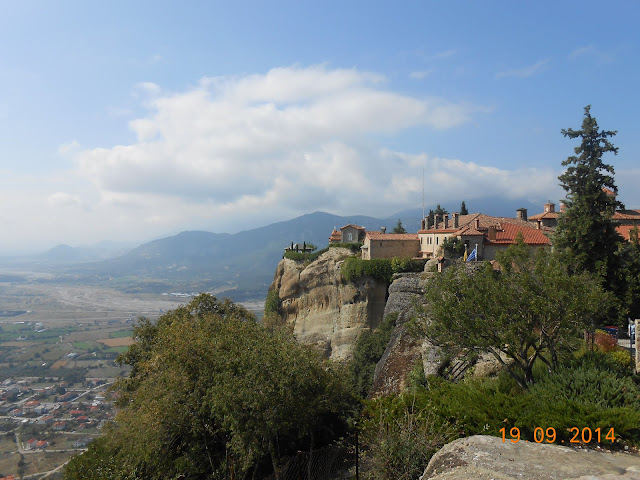Meteora Monasteries (Thessaly, Greece)
The Meteora Monasteries are Greek Orthodox monasteries located high up in the landscape of Thessaly, in the centre of the Greek mainland. Greek Orthodox monks have been using the peaks in this region for their religious activities for the past 1000 years. I visited this spot five years ago (as you'll see from the photos) as part of a trip to Greece to participate in an archaeological excavation. This was an amazing area that I would like to share.
On this pleasant September day, my tour bus had been winding up and down the roads that carved through the plains and hills of the region. Our destination was a four hour drive northwest from the capital of Athens.
On this pleasant September day, my tour bus had been winding up and down the roads that carved through the plains and hills of the region. Our destination was a four hour drive northwest from the capital of Athens.
As we approached the Meteora region, the road started weaving between large boulders that were incredibly variable in size, some significantly taller than our tour bus. Our tour guide drew our attention to some structures that were just visible at the tops of the higher rock faces, which were difficult to view from our steep angle. As we approached our destination we were met with these views.
The Meteora Monasteries are visually very impressive, managing to both blend with and yet contrast against the gigantic boulder faces they have been set upon. After disembarking from the bus, our approach to one of the monasteries on foot slowly brought their scale into proportion.
A series of winding staircases led us from the road, up and into the monastery itself. The roads and staircases that now provide access for visitors to this UNESCO World Heritage site are relatively recent additions within this landscape, some from as late as the 1960-70s. The cable visible in the picture below alludes to the previous mode of access to the site, prior to the construction of roads. The monasteries were built in the 13th to 16th centuries, and during this time monks accessed the buildings by way of a rope-pulley system where a basket was manually pulled along the cables from across the hills into the monasteries themselves. The baskets contained people, as well as supplies, and were known to occasionally fall into the valley far below due to breakage of the basket or rope-pulley system. Ladders were also used.
Prior to the construction of the Greek Orthodox monasteries, the caves in the region were inhabited continuously from 50 000-5000 years ago. The oldest man-made structure known in this area is a stone wall thought to be built 23 000 years ago as protection from the wind. Monks moved into the caves and fissures on the boulder tops from the 9th century onwards, and eventually the structures that we see today were built.
These monasteries were opened to the public in the late 20th century. A range of treasures, images and paintings can be seen inside the monastery, along with a captivating view down to the valley far below.
Monasteries in Meteora suffered extensive damage during World War 2, where they were subject to aerial bombings. More widely, Greece was negatively impacted by its occupation by the Axis powers, with tens of thousands of Greek civilians dying from starvation, targeted killing or other causes. I found this picture hanging on the wall of one of the monasteries interesting; it displays the sentiments of the Greek people at the time of the war. A Nazi soldier is shown being shot off the top of one of the Meteora boulders, possibly by a Greek monk, while another monk raises the Greek flag.
Leaving the monastery, I felt quite calm and peaceful. It was a beautiful experience to see the spirituality of the monasteries within the enchanting Greek landscape. Although it has been five years since I traveled to Meteora, this is one of my most memorable archaeological adventures.
Sources and additional sources:












Comments
Post a Comment